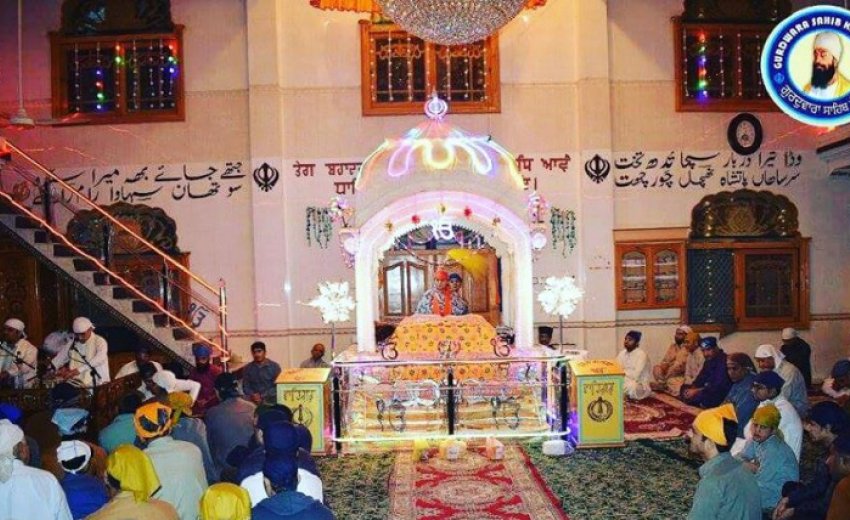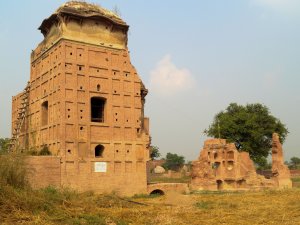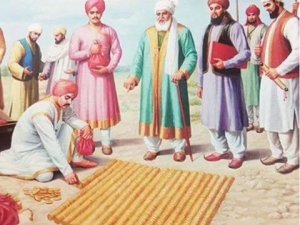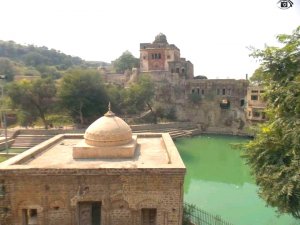One community at the peripheral of Sikh religion is Sindhis Hindus (or Nanakpanthis) in Pakistan. Very little information is available in the public domain especially around their relationship with Sikh religion. At the most, we know that some Sindhis are Sehajdhari (literal meaning slow adopters) Sikhs. What does this statement entail? Are all Sindhi Hindus in Pakistan, Sehajdhari Sikhs? How did they adopt the teachings of Guru Nanak and finally are they still following the Sikh doctrine? I decided to explore and research on the subject. Let's start with little bit of background about Sindh.
Sindh
Sindh is one of the main provinces of Pakistan in the south-east of the country. It borders the Indian states of Rajasthan and Gujarat to the east and the Arabian Sea to the South. It is home to 93% of the Hindus in Pakistan. Authorities estimate that there are 3.5 million Hindus in Pakistan. The last census in Pakistan was conducted in 1998 and it recorded 2.3 million Hindus. The Pakistan Hindu Council, however, gives a much bigger estimate of 8 million. This cannot be verified from other sources. Sindhi Hindu surnames tend to end in 'ani' like Advani, Chandnani, Mulchandani, Vaswani etc but there are others like Chugh, Bhatia, and Lohana among others. The unique aspect of Sindhi Hindus is their reverence to Guru Nanak Sahib and Guru Granth Sahib Ji.
History
Islam came to the Indian subcontinent through Sindh following Arab invasion of Sindh by Mohd Bin Qasim in 712 AD, who is referred sometimes as the first citizen of Pakistan. This ended the Hindu rule but the Hindu population continued to exist in the province. They learnt Persian and embraced merchandising and money lending as their main professions. Many of them worked as able administrators for the Muslim rulers. When the British annexed Sindh in 1843 they were a quarter of the total population. The Sindhi Hindus were resilient and quickly embraced modern education and by 1940s they were holding 40% of the land in Sindh. Prior to the British, they were not allowed to hold land but this had not stopped them from accumulating wealth as they possessed legendary business acumen.
Partition
The relation between Hindus and Muslims in Sindh were much better than that which prevailed in Northern India. India was partitioned in August 1947 but the first Sindhi Hindus migrated to India only in January 1948. The Muslim refugees from India who came to Sindh had lost everything and had an axe to grind against Hindus. This created an atmosphere of terror and mistrust. Unlike Punjab which faced bloody massacres, Sindh faced only three or four incidents of rioting and very few killings, but this led to the migration of almost 800,000 out of 1.4 million Hindus. Sindhi in India tend to mention a higher figure of 1.25 million. KR Malkani 'The Sindh Story (1984)' mentions several sentimental & tearful instances where Sindhi Muslims tried to stop neighbouring Hindus from leaving. In a more recent work 'Hindu, Sufi or Sikh (2008)' by Steven Ramey, who extensively spoke and observed Sindhi Hindus in India, records Sindhi elders blaming Muslim refugees from India for their departure. Most of them had anything but nice things to say about their Sindhi Muslim neighbours.
People
Compared to a large-hearted but short tempered Punjabi, an average Sindhi is perhaps less flamboyant. Punjabis were recruited heavily by the British and continue to have a tradition of joining the armed forces but a Sindh-based regiment came into existence only in 1980. Sindhi people love their language and this is a unifying factor among them. Among the Punjabi people, the language and its script continue to be the dividing element.
To understand Sindhi Hindus in Pakistan, one has to keep aside our standard and preconceived ideas about what constitute a Hindu, Sikh and even Muslim religion. The Sindhi Hindus are heterodox in their belief and rituals. Their religion is a mixture of Hindu, Sikh and Sufi Islam. For this short article, I will concentrate only on the Sikh aspect.
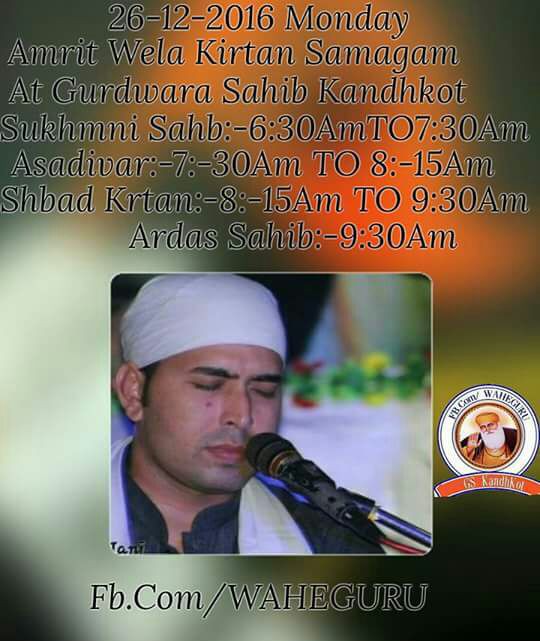
Udasi Darbars
The presence of numerous Udasi Darbars in North Sindh is intriguing. Udasi Panth has a reputation among Sikhs, they are accused of bringing rituals and practices which were generally associated with the Hindu religion and were contrary to Sikh tenets, into the Gurdwara Sahibs in Punjab. There is some truth in this statement. However, it is also true that Udasi priests introduced Gurbani and Guru Granth Sahib to areas beyond Punjab where there were no Gurdwara Sahibs. To begin with, there were no Sikhs and Gurdwara Sahibs in Sindh but they had a lot of Udasi Darbars.
The Udasi Darbar, place of worship has Guru Granth Sahib Ji along with idols of Hindu Gods and Goddesses. In some places, Guru Granth Sahib Ji is placed in a separate room with full respect. The Darbar follows the standard Sikh code of conduct (Maryada,) 'Asa di War' is recited and sung in the morning and 'Rehras Sahib' in the evening. Like small Gurdwaras in Punjab, 'Asa di War' kirtan is performed only on special occasions. In some big Darbars, this bani is performed daily. Guru Granth Sahib Ji is given utmost reverence and 'Prakash' and 'Sukh Asan' (opening and closing) is done every day as per Maryada. Keertan, Ardas, Karah Parshad and Langar are performed and undertaken as per the Maryada.
British historian & Sindh
Richard F Burton wrote 'Sindh & the races that inhabit the Valley of the Indus (1851)' in which he describes the curious mix of Hindu and Sikh practices among Sindhi Hindus. He observed that "they show a general tendency towards the faith of Nanak Shah, and that many castes have so intermingled the religion of the Sikhs with their original Hinduism, that we can scarcely discern the line of demarcation."
Burton adds that there are two chief orders of Sikhs namely the Akali Khalsa, or pure Sikh and the Lohano (merchant caste) Sikh. He writes "the former imitates the devotee of the Panjab in all things. He never allows a razor to touch the hair on any part of his body, has the usual religious hatred to tobacco and touches the flesh of those animals only which have been killed according to the form called Jhatka. He wears no Janeo, but is distinguished by the Chakkar (quoit), Kangani (iron ring worn on the wrist) and short drawers called Kachh."
Burton states that a Lohano Sikh is called Nanak Shahi and Munnee Singh (a Shaver.) Sometimes he wears a 'kara' but never the Chakkar. The writer mentions Udasi priests and their initiation of people into Nanak Shahi and Khalsa (Sikh) faith. We are told that these people recited Jap Ji Sahib, Rehras Sahib and Sukhmani Sahib.
Who propagated Sikh tenets in Sindh?
History tells us that many Udasi Panth priests came and settled in Sindh. This explains the scores of Udasi Darbars in North Sindh. The Udasi priests are ascetic, remain celibate and do not keep 'Kesh' (uncut hair and beard.) Their doctrine is heavily influenced by the Hindu religion. The Udasi Panth was founded by Baba Sri Chand, son of Guru Nanak Sahib Ji. The Darbar at Thatta commemorates his visit to Sindh. He was not given the guruship by his father. Despite all this, the evidence seemed to suggest that the Udasi Panth contributed towards the propagation of Sikh tenets in Sindh. Still, I wanted to confirm my deduction from some academic sources.
I stumbled upon a newspaper article about an upcoming book titled 'Sikh and Hindu Heritage of Sindh' by Dr Zulfiqar Ali Kalhoro, Head of the Department of Development Studies at the Pakistan Institute of Development Economics, Islamabad. I contacted Dr Kalhoro about the book. He informed me that a couple of other projects have taken precedence and this book may take up to two years before it sees the light of day. I spoke about my interest and he concurred with my deduction that Udasi Panth priests preached the Sikh doctrine that led to the Nanakpanth sect which is a blend of Hindu and Sikh religions. Before we discuss these Nanakpanthis, let us talk about Sikhs in Sindh.
Gurdwara Sahib
The first Gurdwara in Sindh was probably constructed when Maharaja Ranjit Singh sent Guru Granth Sahib Ji on an elephant to the capital city, Hyderabad. Sindh was ruled by the Talpur dynasty who provided the land at Hyderabad. This has been mentioned by KR Malkhani. The 'Akal Bunga' as it was then known, does not seem to exist now but the road where it was built is still known as Akal Bunga road. The 1901 census records only 1,000 Sikhs in Sindh. The Chief Khalsa Diwan of Amritsar sent preachers and by the time of partition, the number of Sikhs (Khalsa) had risen to 40,000. Sant Baba Thahriya Singh Ji (d.1927) from Kandra in Sindh was a local Nanakpanthi who took 'Pahul' and became Khalsa. He continues to be a huge inspiration for Sindhi Sikhs and Sehajdhari Sikhs in India. Sindhi Sikhs left for India in August 1947 as they were targeted and were at the receiving end of the violence as Muslim refugees from India confused them with Punjabi Sikhs who had forced them to leave their homes.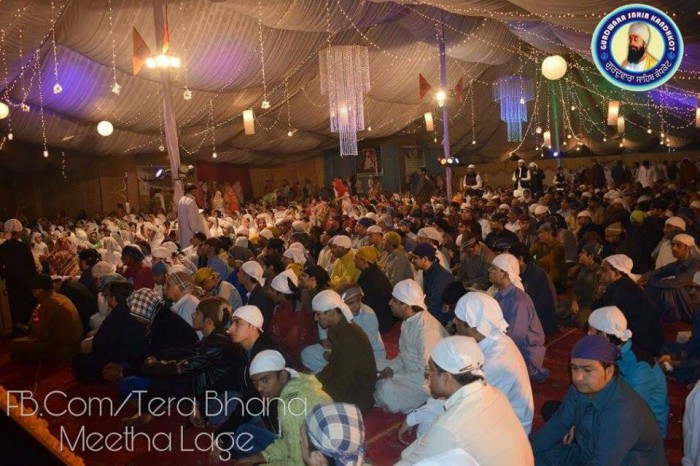
Present situation
There are estimated 8,000 to 10,000 Sikhs (Khalsa) in Sindh. They are all recent converts from Sindhi Nanakpanthis. From 2,500 to 4,000 are in Karachi, South Sindh which is the capital of Sindh and commercial hub and major port of the country. Curiously some Sikhs are in a long court case with some Nanakpanthis in Karachi over a Gurdwara Sahib which has been closed for many years. There is one functional Gurdwara Sahib in Karachi. Within the complex of Swami Narayan Mandir, a separate structure 'Guru Nanak Durbar' has been built which has four entrances and has Parkash of Guru Granth Sahib Ji. The daily routine of a Gurdwara Sahib is performed as per the Maryada.
The most remarkable thing which I have observed is the emergence of new Gurdwara Sahibs. In the last 10-15 years, new Gurdwara Sahibs have been built in every district and major town of North Sindh. People have become more aware of the Maryada and, in a way, some of them felt the need for a Gurdwara Sahib. These Gurdwara Sahibs are run by Nanakpanthi Hindus. The congregation and Keertaniyas and Granthi are all Nanakpanthis. Every Gurpurab including that of Guru Gobind Singh Ji is celebrated with great fervour. The standard Rehat Maryada is followed in these Gurdwara Sahibs.
Are all Sindhi Hindus Nanakpanthis?
The short answer is no. The districts of Tharparkar, Umerkot and the neighbouring area which borders India, speak Thari or Dhatki (also known as the Dhati) language. This language is closely related to Marwari or Rajasthani language. There is only one Darbar in the district of Tharparkar which it the largest district of the province. It is in Mithi, the district headquarter. Interestingly, Mithi is a Hindu majority town. Umerkot was a Hindu Rajput state which ceded to Pakistan upon partition. The Kalhora dynasty (1701-83) had won and annexed the Tharparkar region to Sindh. These people have been a part of Sindh for over two centuries but they still carry their unique culture and language. Their religion is closer to the Hinduism practised in Rajasthan. They have temples dedicated to Hindu God and Goddesses. Their places of worship do not have Guru Granth Sahib Ji. Tharparkar and neighbouring region has almost 50% of the Hindu population of Sindh. Based on this research and strict estimates, at least 50% of the Sindhi Hindus are not Nanakpanthis.
Terminology - Nanakpanthis
In Sindh, the word Sehajdhari Sikh is not prevalent. This is used in India only. In Pakistan, the nomenclature used is "Nanakpanthis" (the Panth of Guru Nanak). Old Persian texts written before the initiation of the Khalsa Panth, refer to the followers of Sikh Gurus as Nanakpanthis. A Sindhi Sikh (Khalsa) from Karachi contacted me and questioned me for calling these Sindhi Hindus as Nanakpanthis. I explained that this is the terminology used by Pakistani academics and I have simply borrowed it. He added that these people follow all the rituals of Hinduism, do idol worship and are Hindus except that they keep Guru Granth Sahib in their places of worship. I was not comfortable in dismissing these people as Hindus against their will in the way that some majority community nationalist organisations in India term Sikh philosophy as 'Vedanta' and label Sikhs as 'Keshdhari Hindus." I keep an open mind and feel that there may be some truth in this assertion but that this does not explain the number of new Gurdwara Sahibs in North Sindh. I decided to research this aspect and spoke to a number of people. A summary of some of my conversations is as follows:
My interactions with Sindhis
I have not provided full names of individuals with whom I spoke in the write-up. I have used either a first name or surname (not both) to protect their identity.
I spoke to Mr Lohana, he is an IT professional working in Karachi in his early thirties. He informs me that the Nanakpanthi community has been reciting Gurbani and associating with Sikhi for 500 years and they should not be considered outside the Sikh community. He is closely associated with Laxami Narayan Temple in Karachi and 'Gurdwara Sahib' inside its complex. They also run a Gurmukhi School for children. He regularly goes to the Gurdwara Sahib and attends all the Gurpurab celebrations. At times he is given 'seva' during important programmes conducted in the complex. He admits that he will join celebrations on Krishna Janamashtami and other Hindu festivals. I pushed the boundaries of our friendship and asked about the ongoing dispute about the possession of the locked Gurdwara Sahib. He informed me that some Nanakpanthis who were bestowed with the grace of Wahe Guru Ji became Sardars (Khalsa Sikh) and now they tell us 'we are doing things wrongly.' I could sense that Lohana was upset when he said that these people grew up with us but now they behave that as if we are different. He said nobody can take the 'Sharda' from their hearts towards Guru Granth Sahib Ji.
Unlike Steven Ramey, who observed that Sindhi Hindus in India at Lucknow and other places who came inside the place of worship would all bow to Guru Granth Sahib Ji but some would miss bowing in front of Idols and Bhagwat Gita. He also observed Keertan, Ardas and Langar and concluded that Guru Granth Sahib Ji was given more respect than others. I am not in a place to do research and analysis to that extent, at this moment.
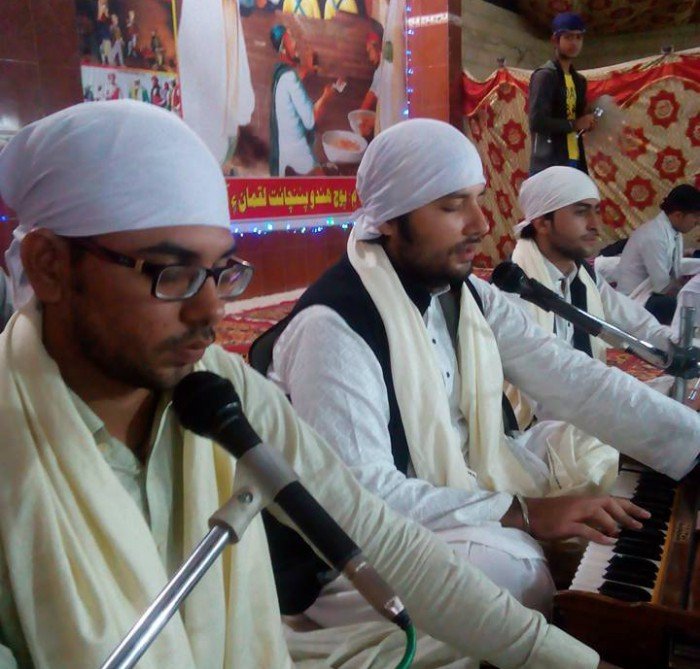
Mr Thorani is an eighteen year old youngster from Kandhkot. He learnt Gurmukhi from a local Darbar and for the past 4 years has been teaching it as well. He is studying in 12th class (or A levels.) When asked, he told me that he regularly recites Jap Ji Sahib, Chaupai Sahib, Anand Sahib (six pauris) and Rehras Sahib. He describes himself as 'Gursikh' and believes in Wahe Guru and bows in front of Guru Granth Sahib only. He adds that 'Gursikh' undertake Anand Karaj unlike others who may take 'Agni/Havan' wedding.
One night I was up late at night, he contacted me and I found out that he had gone to local Gurdwara Sahib at 4.15am to do the 'Prakash' of Guru Granth Sahib Ji. I asked him a little bit more about the local Gurdwara Sahib. He informed me that the Sangat felt the need for a Gurdwara Sahib and Sri Guru Teg Bahadur Sahib Singh Sabha Gurdwara was built in 2008. The Gurdwara Sahib celebrates and commemorates Gurpurabs, shahidi diwas and other days as per the Sikh calendar. He added that every evening, in addition to daily langar, tiffin boxes with food are provided for poor people. He advised that local Sangat pays the full expenses for a wedding (with gifts) at Gurdwara Sahib for poor people.
Vikram is a 26 year old Rice trader and also refers himself as 'Gursikh'. He states he respects every religion but as a 'Gursikh' he believes in one and only Wahe Guru and bows only in front of his Guru, Guru Granth Sahib Ji. He believes more 'parchar' is needed as people continue to go to Ashrams which revolve around a personality. He adds that he tells people not to go to Ashrams. He says as a Sikh, our Guru and teacher is only Guru Granth Sahib. However he admitted that some Sants (of Ashrams) 'Guru naal johran wale hann.' I asked him the percentage of Gursikhs in his town. He advised that 30-40% are 'Gursikhs' and a similar number are Nanakpanthis, who, to varying degrees, have a bond with Guru Granth Sahib Ji. About 20% are Hindus who are not at all attached with Guru Granth Sahib Ji.
Just to clarify, Ashrams are like deras which have a 'head,' or in a Sikh terminology 'Dehtari Guru.' As in Punjab, some of them are very popular and within those Ashrams, daily 'Asa di War' and 'Sodar Rehras' are performed. They propagate Sikh tenets. Some Ashrams are like these, where 'Gursikhs' may fault them for some aspects but they still recognise the good work they are doing.
I spoke to Mr Panjwani from Hyderabad, who is also a rice trader and is in his mid-twenties. He also refers himself as 'Gursikh'. Hyderabad is the second largest city of Sindh. He informs me that the community has purchased the land for the Gurdwara Sahib and at the moment they are procuring funds for its construction. He learnt Punjabi from a 'Gurmukhi Vidyalaya' and regularly recites Gurbani. He is glad that with the new Gurdwara Sahib, the next generation will be able to be part of Sangat and will be able to learn about Sikhi. He mentioned that every major town in North Sindh is planning to have a Gurdwara Sahib and construction is underway at a number of places. When asked about these Gurdwara Sahibs, he apprised me that first Gurdwara Sahib in the region was opened in Daharki town in 2001. Now there are Gurdwara Sahibs in Kandhkot, Kashmoor, Karampur, Jacobabad, Ghotki, Sukkur, Shikarpur among other places. I asked him if he felt that people are getting closer to Guru Granth Sahib Ji. He proudly said 'yes' and added that, to ensure the Maryada is followed properly, Sangat is constructing Gurdwara Sahibs in each and every town in North Sindh.
Raj is in his late twenties, father of one and runs a grocery shop. He told me that he only believes in Guru Granth Sahib Ji. He said in Urdu 'Jab Humara Guru Poora Hai Ton Adhuron Ke Saath Kyon Jurhan' (Our Guru is complete; why should we attach with the incomplete (ones?))
Conclusion
I feel it is not appropriate for me to question or decide if someone is Sikh or not. But these people who term themselves as Gursikhs, follow Guru Granth Sahib Ji only, recite Gurbani and do not engage in idol worship are definitely Nanakpanthis. Some people may not agree with me but it is fascinating that, without any Sikh missionary involvement, these people are getting closer to the Sikh religion.
In this short article, I have tried to give readers a flavour, just the tip of the iceberg about these people. I hope Sikhs will be more informed about Sindhi Nanakpanthis and will try to open communication channels through our organisational bodies in Amritsar and Delhi. If you meet a Sindhi Nanakpanthi in a Gurdwara Sahib, think of him as a brother from a different province who like us has been associated with Sikhi for the past 500 years. As I finish this write-up, the words of my late grandfather echo in my ears "Mere Guru Nanak da path bahut vaada hai".
Acknowledgement: In addition to the people mentioned in the write-up, I would like to thank Zahida Rehman Jatt Ji of University of Sindh for her comments on the subject and for providing two ebooks on Sindh. I am also thankful to Sardar Jagjit Singh of Mithi, Mr Rathore from Nagarparkar, Mr Hirani and Mr Khatri from Midlands, UK for their input on Sindhi Hindus. It would not have been possible to write this article without their assistance and cooperation.
------------------------------
Related Article:
https://www.sikhnet.com/news/sindhi-sikhs

